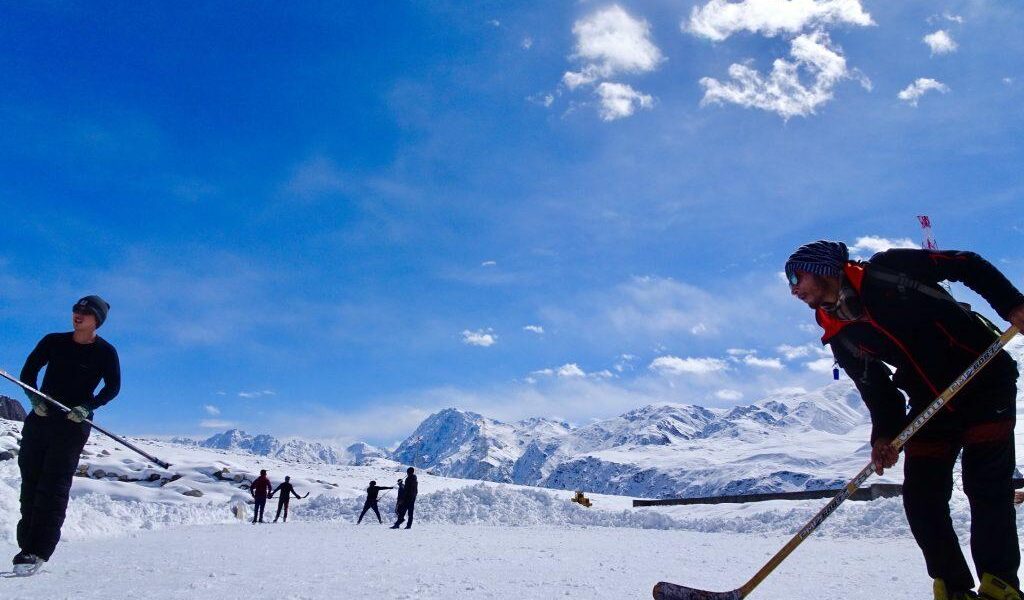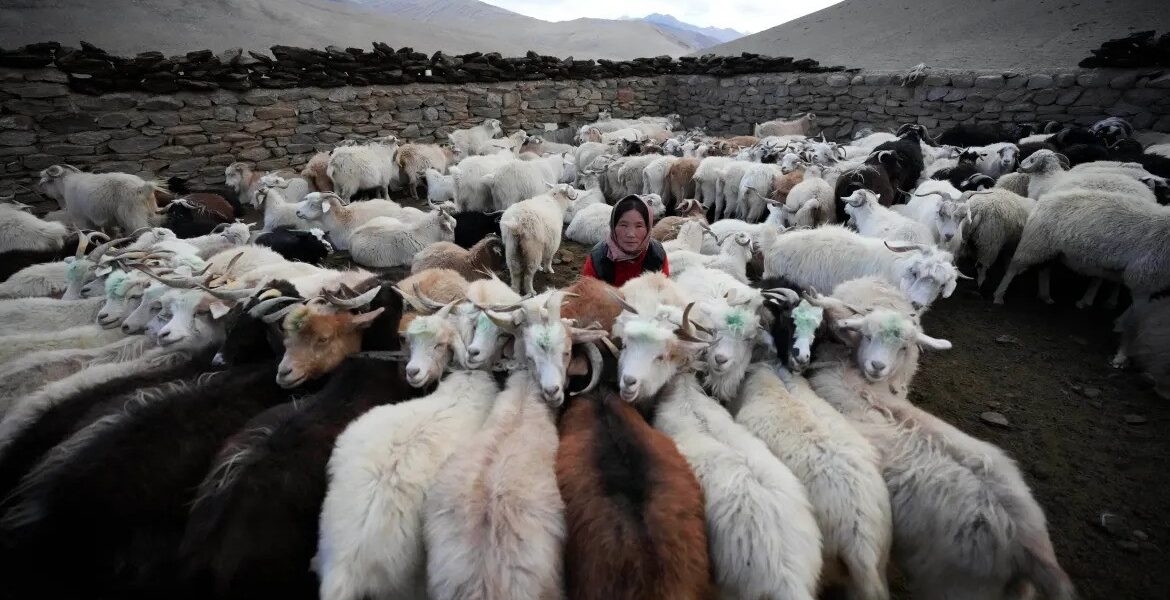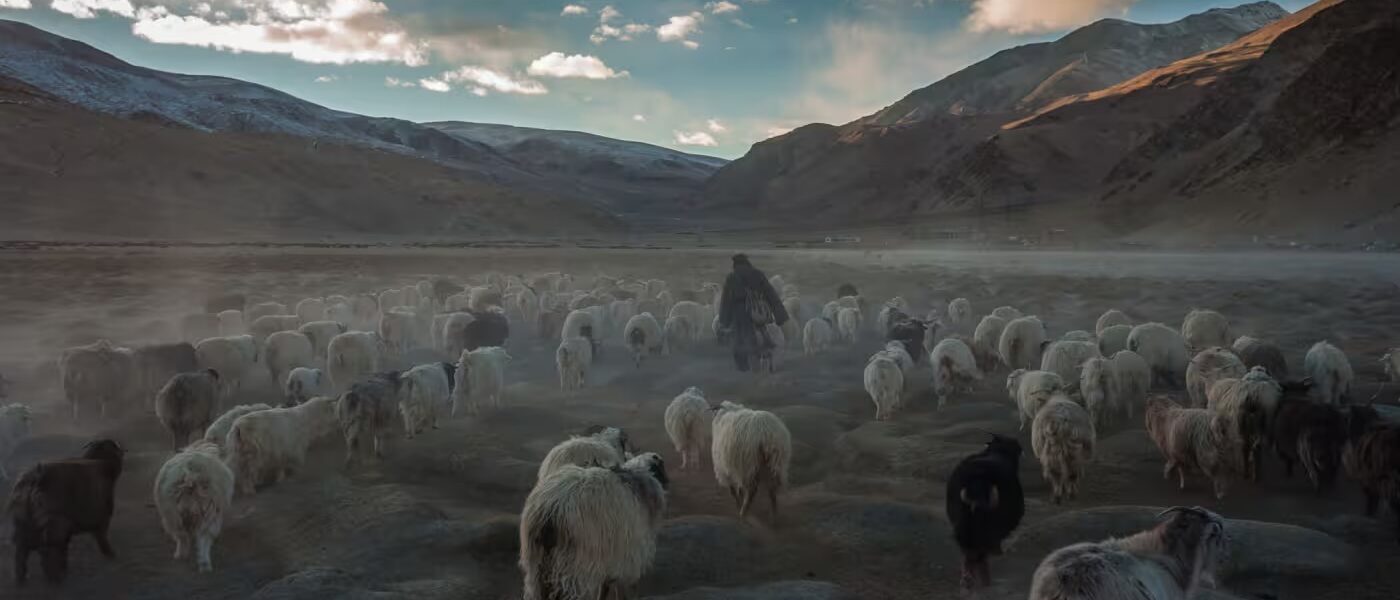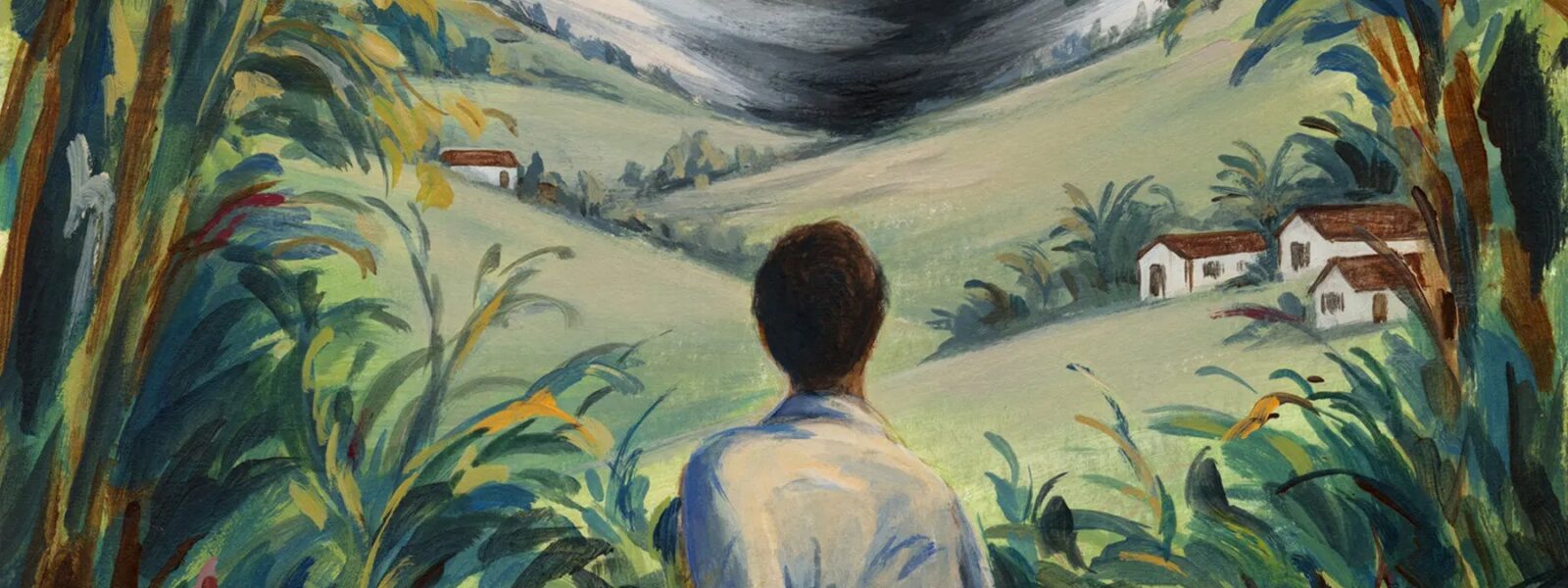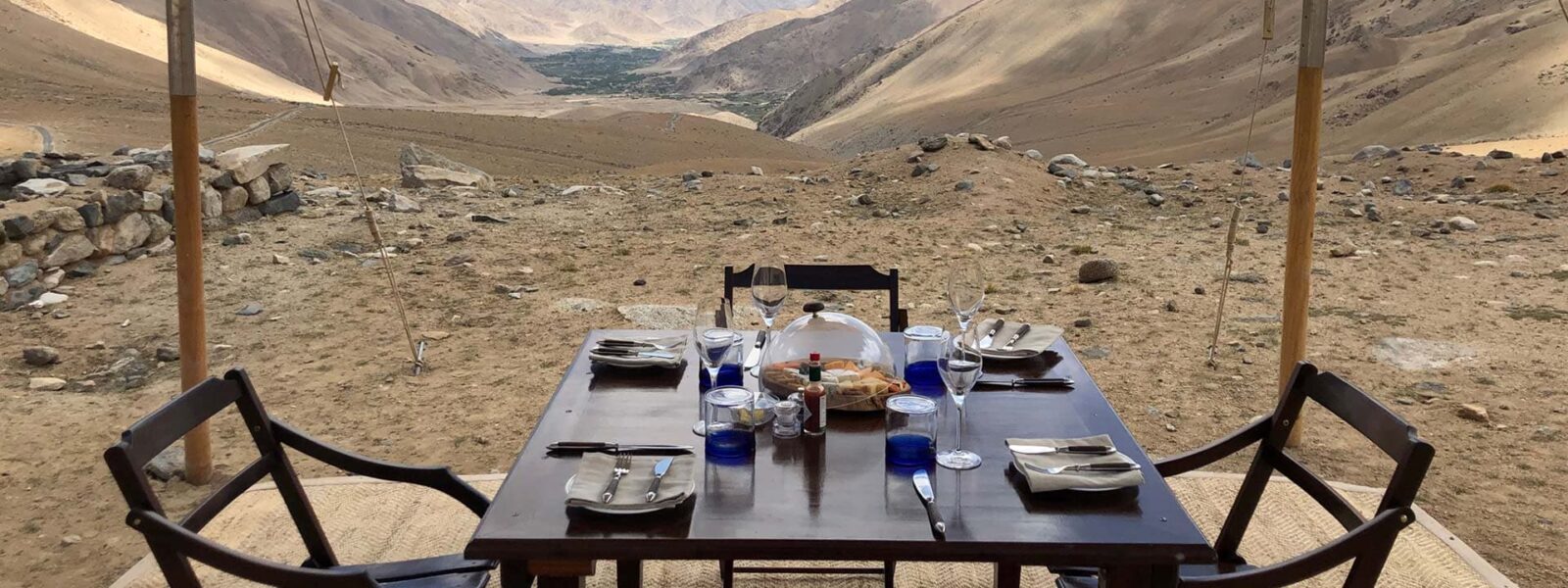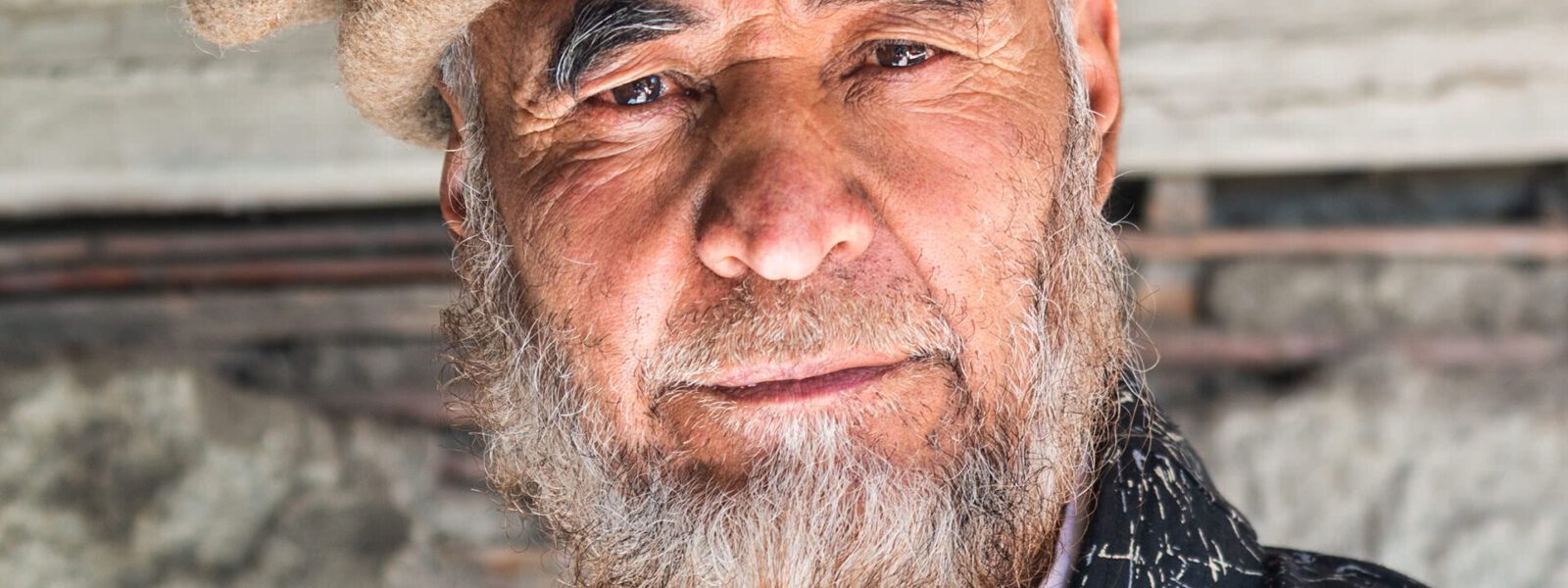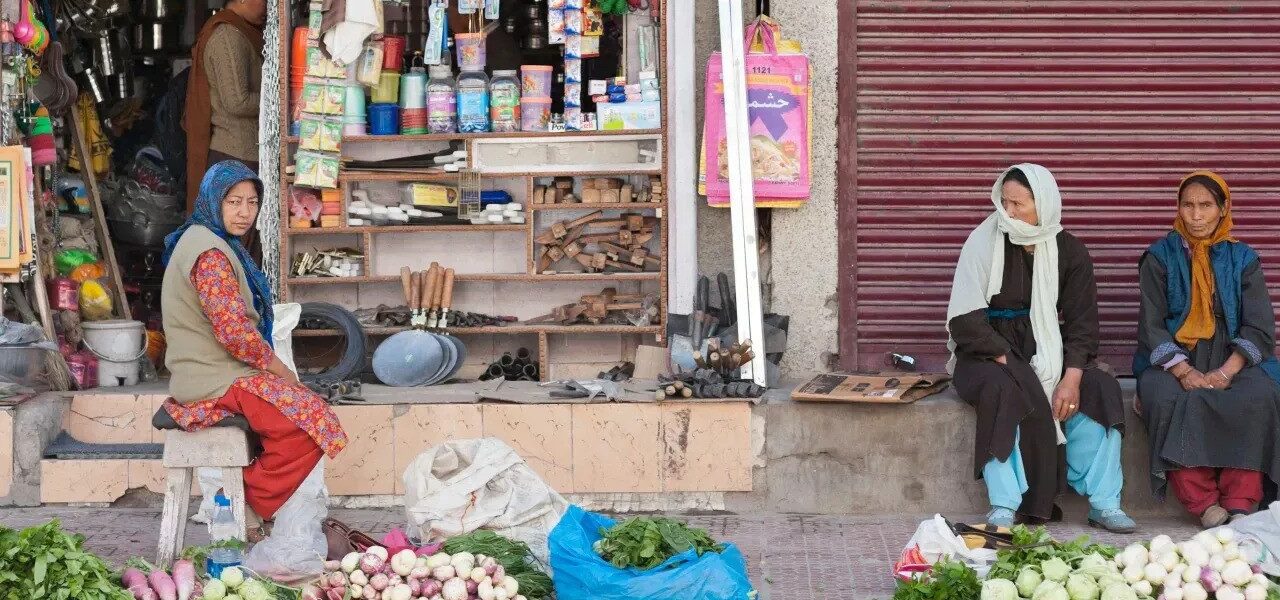Ice Hockey and Cultural Exchange in Ladakh
Nestled in the rugged heart of Ladakh, the villages of Chiktan and Drass offer a unique glimpse into the fusion of ancient traditions and modern sport. These remote locations, surrounded by towering mountains and sweeping valleys, are not just home to resilient communities but also to a rapidly growing ice hockey culture that has captured the hearts of local residents and international visitors alike.
In these villages, winter brings a special magic. While the snow settles thickly over the land, a different kind of energy takes hold. It is a time when the community, known for its strong cultural roots and tranquil lifestyle, gathers around a more recent tradition — ice hockey. This sport, relatively new to the area, has quickly become more than just a game. It has transformed into a symbol of cultural exchange and unity, drawing together people from different parts of the world.
As the winter chill settles over the valleys of Chiktan and Drass, the ice-covered rinks come alive with energy. Local youth, many of whom have never left the villages, join with visitors from Europe, North America, and other parts of India. They come to these villages for a chance to play in tournaments, exchange ideas, and experience life in one of the most remote and serene locations in the world. What begins as a sporting competition quickly becomes a journey of cultural discovery.
In Chiktan, the game has grown beyond the rink. What was once a modest pastime has turned into a bridge that connects cultures, creating lasting relationships among participants. International players who arrive for the tournaments are often taken by surprise, not just by the cold but by the warmth of the welcome they receive from the Ladakhi community. There is something profoundly humbling about playing a game in a village where daily life is so deeply rooted in the rhythms of nature.
The story of how ice hockey found its place here is one of serendipity. It is said that a group of foreign travelers arrived in Ladakh years ago during the winter season. As they ventured through the valley, they brought along their skates and sticks, hoping to share their love for the game with the locals. The ice, smooth and expansive, provided the perfect playground. What followed was a shared passion for a sport that, although foreign to Ladakh, quickly took root. Now, each winter, the village becomes a hub for those seeking to engage in something uniquely meaningful — a place where sport and culture meet.
The cultural exchange goes far beyond the rink. As visitors stay in local homes, they are immersed in Ladakhi culture, sharing meals with the families, learning about traditional practices like Tibetan Buddhist rituals, and witnessing the strength of a community that thrives despite the harshness of the landscape. The cross-cultural interactions are more than just educational; they are transformative. For many players, these interactions leave a lasting impact, changing how they view the world and their own cultures.
Chiktan and Drass, though separated by vast expanses of mountains, share a bond that is deepened by ice hockey. The rinks, however humble they may be, are a testament to the power of shared experiences to bridge divides. And as the seasons change, bringing with them the promise of another round of tournaments, one thing remains clear: ice hockey in Ladakh is not just a sport. It is a story of people coming together from across the globe, united by a common love of the game and a desire to connect with a culture that, despite its remote location, has much to offer the world.
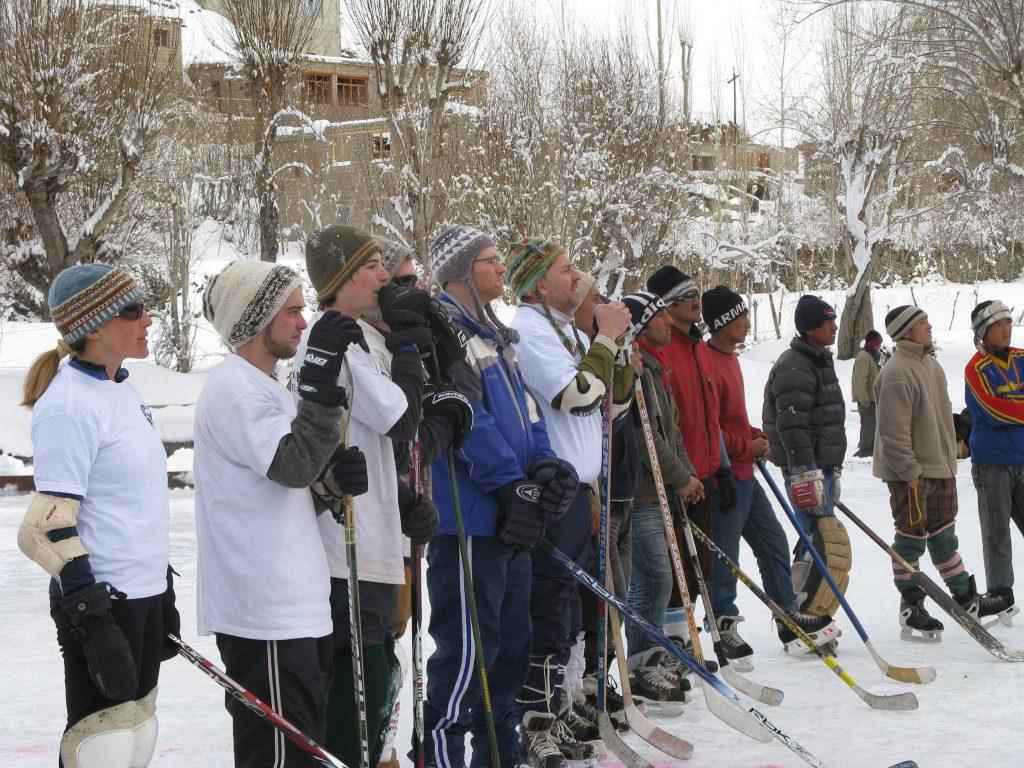
The Unlikely Intersection of Ice Hockey and Ladakhi Culture
In the heart of Ladakh’s harsh winters, a surprising cultural shift is taking place. For centuries, the people of Chiktan and Drass have lived in isolation, practicing traditions passed down through generations. Their lives revolve around the seasons, farming, and shepherding in one of the most unforgiving climates on Earth. Yet, this remote way of life has not stopped them from embracing a new form of connection: ice hockey.
Ice hockey, a sport that originated in cold-climate countries, may seem an unlikely fit for Ladakh. But the villagers of Chiktan and Drass have taken to it with a surprising fervor. The first rinks were makeshift, carved out of the frozen lakes that dot the landscape. The sport was introduced by a group of foreigners who came to Ladakh years ago and saw the potential to share their passion for the game. They had no idea that this simple offering would plant the seeds for a growing tradition.
What is fascinating about the rise of ice hockey in these villages is not just the sport itself, but the way it has become interwoven with the fabric of Ladakhi culture. For a community that has long relied on cultural rituals, the introduction of a modern sport like ice hockey could have been met with resistance. Instead, it has been embraced as another avenue for cultural exchange — a way for people from distant corners of the world to meet, play, and learn from each other.
In Ladakh, the connection between sport and culture has always been strong. From the ancient traditions of archery and tug-of-war to the more recent enthusiasm for winter sports like ice skating, Ladakhis have a long history of engaging with physical activities that both challenge and celebrate their way of life. Ice hockey, in this sense, is not just an import but a new chapter in a long history of sporting passion. It complements the land’s natural spirit — harsh, beautiful, and full of untapped potential.
What makes ice hockey in Ladakh even more unique is the way it has become a medium for cultural exchange. Each winter, international teams from places like the United States, Canada, and Europe make the journey to Ladakh, eager to play against local teams. The visitors are often struck by the stark beauty of the villages, but it’s the warmth of the people that leaves a lasting impression. Many describe the experience as transformative, as they come not only to play a game but to immerse themselves in the culture, learn about Ladakhi traditions, and witness the resilience of a people who call one of the world’s most remote places home.
The beauty of this exchange lies in its simplicity. On the ice, there are no cultural barriers. Everyone, whether local or international, is equal in the pursuit of the game. And as players swap stories on the rink, they also swap insights about their lives, their homelands, and their respective cultures. The game becomes a metaphor for the greater connection that is unfolding in these villages — a true cross-cultural exchange that transcends sports.
The ice hockey tournaments in Chiktan and Drass are not just about winning or losing. They are celebrations of the shared love for the game and the cultural bonds that are formed in the process. These villages, once isolated from the world, are now becoming symbols of the potential for global connections through sport. And as the seasons change, bringing fresh snow and new teams, the story of ice hockey in Ladakh continues to grow — one pass, one goal, and one handshake at a time.
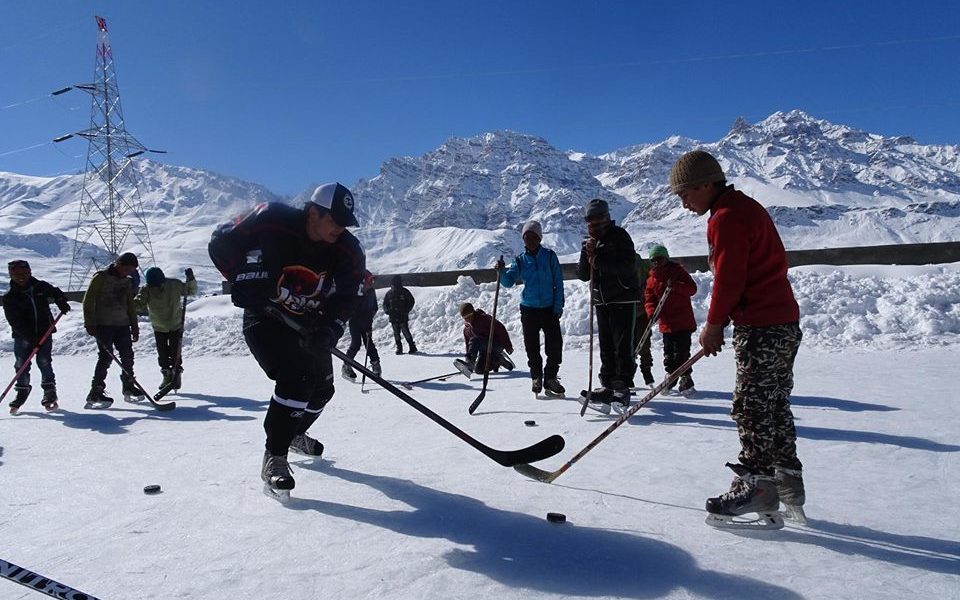
Chiktan and Drass: Villages Beyond Time, United by Sport
Despite the isolation that marks much of Ladakh, the villages of Chiktan and Drass are proving that even the most remote places can find ways to connect with the world. These villages, perched high in the Himalayas, are not just defined by their rugged landscapes but also by the strength of their communities and their ability to adapt to the world beyond. Ice hockey has become a medium through which they are not only celebrating their own culture but are also reaching out to the global community.
The journey of these two villages with ice hockey is nothing short of remarkable. In Chiktan, a small village that often remains under the radar for most travelers, the sport has taken root in a way few would have predicted. The community, once focused entirely on traditional farming, has embraced the challenges of creating an ice rink from the frozen surface of nearby lakes. Here, players—both young and old—gather, their breath visible in the frigid air, as they play the game they have come to love. With every swing of the stick, they are building not just skills but a future that includes new opportunities and connections.
In Drass, known for being one of the coldest inhabited places on Earth, the community has similarly embraced the sport, though the journey was not without its hurdles. The harsh weather, combined with the logistical challenges of bringing in equipment and setting up a rink, made the early days of ice hockey in Drass a struggle. But with the determination characteristic of Ladakhi people, the village pressed on, and today, Drass hosts a vibrant ice hockey tournament each winter. For the people of Drass, the ice rink has become more than just a place for sport; it has become a symbol of resilience, reminding them that even in the most extreme conditions, the spirit of community and sport can thrive.
The beauty of ice hockey in these villages lies in its ability to bring people together across vast distances. While the rest of the world may view Ladakh as a place of seclusion, the people of Chiktan and Drass are proving that sports can bridge the gap between cultures. Each year, teams from across the globe—Europe, Canada, the United States—make the long journey to Ladakh to compete in the tournaments held in these villages. For many, the journey is not just about the game. It is about connecting with the land, the people, and the culture in a way that few other experiences can offer. The sport creates a shared space where differences fade, and common ground is discovered through every pass, every shot, and every handshake.
In both villages, the passion for ice hockey transcends the rink. The event is more than just a competition; it is a cultural gathering. It is an opportunity for visitors to immerse themselves in Ladakhi culture, from sharing traditional meals with families in local homes to learning about the religious and spiritual practices that shape life in these remote valleys. The visitors, in turn, bring their own experiences and traditions, adding layers to the already rich cultural tapestry of Ladakh. In these exchanges, both locals and international players are transformed, their perspectives broadened by the shared experience of the game.
The community spirit that ice hockey fosters in these villages is extraordinary. The challenges of playing in the harshest conditions are matched only by the joy and sense of unity that the sport brings. In Ladakh, the game is more than just an event—it is a celebration of life, a recognition of what can be achieved when communities unite around a common passion. In Chiktan and Drass, ice hockey is not just about scoring goals; it is about building a lasting connection to the world beyond the mountains, a connection that will only continue to grow as the sport—and the spirit of Ladakh—reaches ever further.
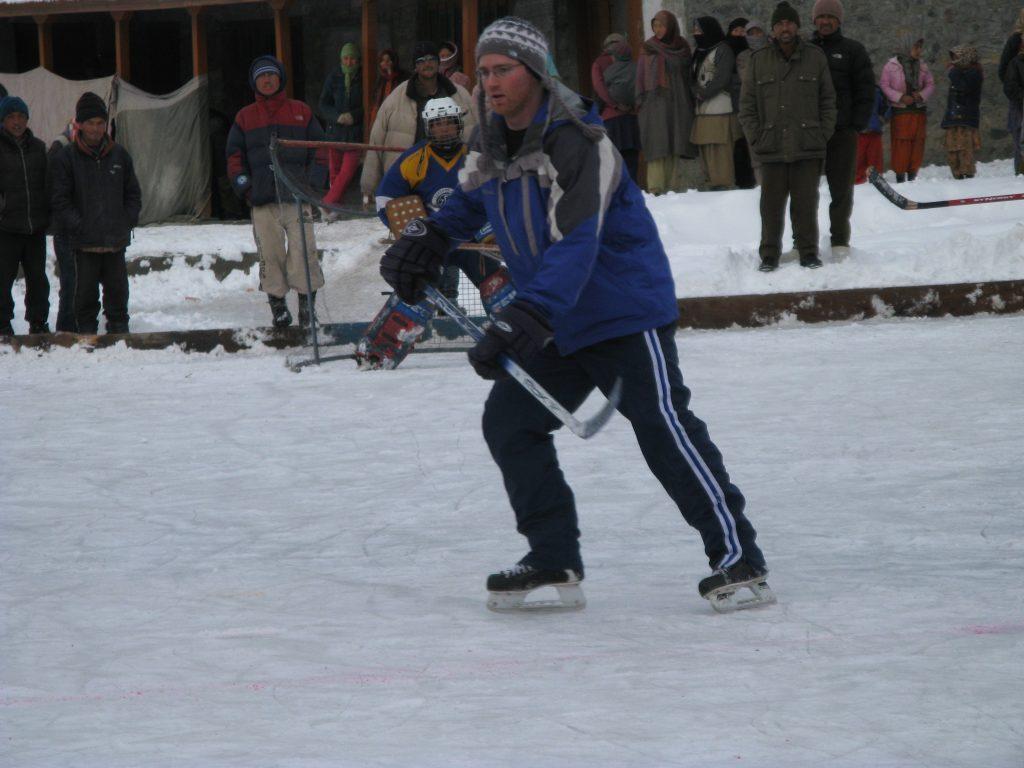
The Role of Ice Hockey in Building International Friendships
In a world that often seems divided by borders and differences, ice hockey in Ladakh has emerged as an unlikely yet powerful tool for bridging these gaps. The tournaments held in the villages of Chiktan and Drass are much more than competitive sporting events; they are an opportunity for people from different continents to come together, share stories, and form lasting friendships. These ice hockey matches are a celebration of global unity, where the rink becomes a place of shared experience rather than rivalry.
As international teams travel to Ladakh, they come not just to play, but to immerse themselves in the culture of the region. Many participants are surprised by the warmth of the Ladakhi people, who open their homes and hearts to their guests. The experience goes beyond hockey—it is an exchange of ideas, of customs, and of lifestyles. Whether it’s over a bowl of steaming tsampa or while watching the mesmerizing rhythms of a traditional dance, the connections made in Ladakh are not just about sport but about shared humanity.
For players, this immersion into a culture so different from their own is eye-opening. They come to learn about Ladakhi Buddhism, the ways of the monasteries, and the daily life that unfolds under the shadow of the Himalayas. They experience firsthand the challenges faced by those living in one of the most extreme environments on the planet, where high altitudes and freezing temperatures are the norm. And in return, they share their own stories of life in the West, where modern conveniences often create a disconnection from the natural world and simpler ways of life.
The friendships formed during these tournaments are not fleeting. Over the years, many players return to Ladakh to reconnect with those they met the previous year. They keep in touch through social media, sending messages of encouragement and support during the offseason. The bonds that are formed on the rink in Ladakh are proof that, in a world that is often divided, sports can be the great unifier. Ice hockey has transcended its role as a simple sport and become a medium through which people from different corners of the globe can meet, connect, and understand each other better.
What makes these friendships even more remarkable is the realization that they were forged in one of the most isolated and rugged places on Earth. When players first arrive in Chiktan and Drass, they are often taken aback by the sheer beauty and tranquility of the region. The villages, though remote, are welcoming. The spirit of the community is contagious, and visitors quickly feel like part of something larger than themselves. They realize that despite the geographical distance between their homes and Ladakh, the emotional and cultural connections they form are closer than they ever imagined.
As these international friendships grow, they create opportunities for further collaboration. Teams from Ladakh are invited to travel to different countries, further strengthening the ties between the two regions. The ice hockey tournaments in Ladakh are no longer one-off events but are evolving into a global movement that fosters understanding, peace, and collaboration between diverse cultures. This is the power of ice hockey in Ladakh: a sport that starts with a puck and ends with friendships that transcend borders, a living testament to the unifying power of sport and culture.
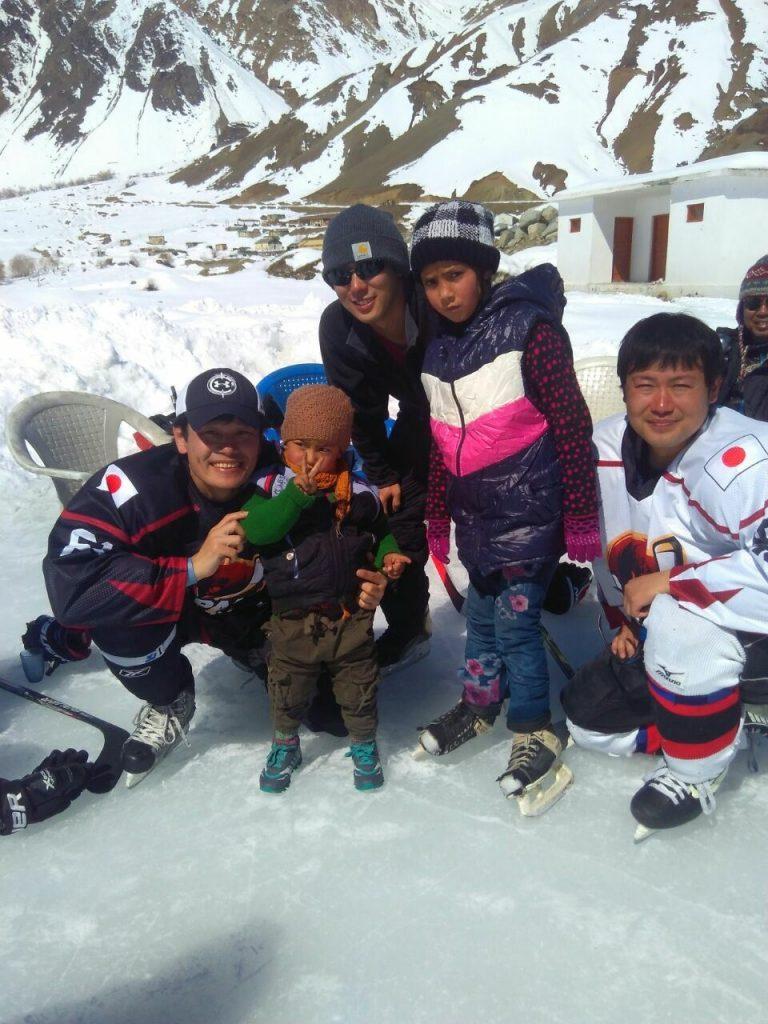
Challenges and Triumphs: Ice Hockey in Ladakh’s Extreme Conditions
Playing ice hockey in Ladakh is not for the faint-hearted. The extreme weather conditions, high altitudes, and isolated nature of the region pose unique challenges for both local players and international visitors. Yet, despite these hurdles, the sport has thrived in the valleys of Chiktan and Drass, becoming an integral part of the local culture and a symbol of resilience. The players, whether locals or guests from distant lands, must contend with obstacles that go far beyond what most would consider a typical sporting experience.
The first challenge is the altitude. Ladakh, with its towering mountains and high plains, is one of the highest regions in the world. The villages of Chiktan and Drass are situated at elevations over 3,000 meters above sea level. For visitors accustomed to sea-level living, even a short period of physical exertion can lead to altitude sickness. Breathing is harder, and stamina wanes quickly. These conditions require players to acclimatize gradually, often taking a few days to adjust before they are ready to step onto the rink.
But it is not just the altitude that makes playing ice hockey in Ladakh a challenge. The weather conditions can be brutal. Winter temperatures in Ladakh frequently drop well below freezing, with some areas reaching -20°C or colder. The ice rinks, which are formed on natural lakes or makeshift outdoor rinks, are often unpredictable. One moment, the surface is smooth and ready for play; the next, it is covered with thick snow or cracks underfoot. Players must adapt quickly, learning how to maneuver on icy patches or over rough, uneven surfaces.
Yet, despite these difficulties, the sport has become a part of the region’s cultural fabric. Ladakhi players have learned to adapt, embracing the harshness of their environment as part of the challenge. There is a sense of pride in overcoming these obstacles—of playing a game in a place where conditions are far from ideal but where the passion for the sport is undeniable. The game is about more than just physical endurance; it is about a shared love for the sport and the community that has grown around it.
For international players, the challenge is not only physical but also mental. Many arrive with excitement, eager to experience the game in such a unique location, but soon realize that they must quickly adapt to the extremes of Ladakhi winters. Training sessions can be grueling, with players often enduring sub-zero temperatures and blustery winds as they work to improve their skills. However, the rewards are just as significant. When the game is played, the experience is unlike any other. The exhilaration of gliding across the ice, surrounded by snow-capped mountains and the warmth of camaraderie, creates an unforgettable experience.
The players, whether Ladakhi or international, share something deeper than the challenges they face. The struggle against the elements becomes a shared story—a story of resilience, of unity, and of the strength of human spirit. In the face of difficult conditions, the game goes on. In Ladakh, the harsh winter conditions have not deterred the growth of ice hockey; they have instead shaped it into something even more remarkable. Every game played, every challenge overcome, is a testament to the determination of the people of Ladakh and the universal power of sport to unite and inspire.
The triumphs on the rink are not just about scoring goals or winning tournaments. They are about the victory of the human spirit, overcoming the odds and turning what seemed like insurmountable challenges into opportunities for growth. The ice hockey tournaments in Chiktan and Drass are symbols of resilience, and every player who steps onto the ice is part of something much larger than the game itself.

Conclusion: A New Era for Chiktan and Drass – Ice Hockey and Cultural Unity
As the final whistle blows on another season of ice hockey in Chiktan and Drass, it becomes clear that these villages have transformed in ways no one could have predicted. What began as a simple game, introduced by foreign visitors seeking a taste of adventure in one of the world’s most remote places, has evolved into a symbol of cultural unity and global connection. Ice hockey in Ladakh is no longer just a sport; it has become a force for change, a way for the world to come together and experience a community that, though far removed from the global stage, is now firmly part of the international conversation.
Through the ice rinks of Chiktan and Drass, an invisible thread has been woven—connecting local Ladakhi players with people from across the globe. These bonds, formed through the love of a shared sport, have transcended cultural boundaries. Players return to their homes with new perspectives, new friendships, and a renewed understanding of a land and a culture they might never have encountered otherwise. The exchange is not just about hockey; it’s about the human connections that are made, the lessons that are learned, and the stories that are shared.
The villages of Ladakh, once isolated from the world, have become an unlikely hub for international sports tourism. Yet, the impact of these tournaments goes far beyond the economic benefits or the excitement of competition. The true value lies in the cultural exchanges that take place—on the ice and off it. The players who come to Ladakh are not only learning about the sport; they are learning about a way of life that is deeply connected to the land and the community. They are experiencing firsthand the resilience of a culture that thrives in some of the most challenging conditions on Earth.
The future of ice hockey in Chiktan and Drass looks bright. As the sport continues to grow in popularity, the communities of Ladakh will continue to embrace it, not just as a game, but as a bridge to the wider world. More international teams will visit, and more Ladakhi players will travel abroad, spreading the message of unity and understanding. The cultural exchange that has taken root here will only continue to flourish, creating new opportunities for connection, growth, and collaboration.
In the end, the story of ice hockey in Ladakh is not about goals or victories on the rink. It’s about the victories off the rink—the victories of human connection, cultural exchange, and the ability to unite through sport. It’s about a land that, against all odds, has found a way to connect with the world through a game, and in doing so, has opened the hearts and minds of those who take part. As the season ends, the true legacy of ice hockey in Ladakh is clear: it is a testament to the power of sport to bring people together, to create lasting friendships, and to inspire change. And this is just the beginning.
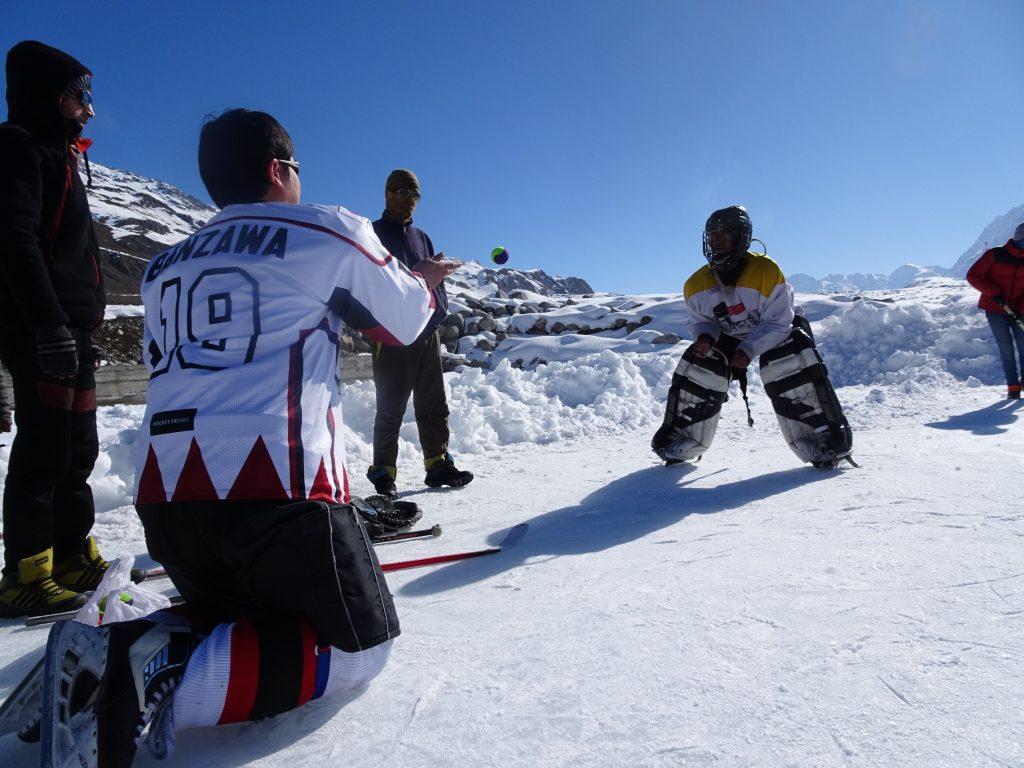
About the Author
Edward Thorne is a British travel writer and former geologist whose writing is characterized by sharp observation, an evocative sense of place, and an unwavering devotion to the physical world. His prose does not dwell on emotions, but instead captures the essence of what is seen, heard, and touched. Thorne’s ability to describe landscapes, people, and cultures with such precision invites readers into worlds far from their own, where they experience not only the physical attributes of the environment but also the stillness, awe, and sometimes the disquiet of remote lands. His writing is a reflection of his belief that true understanding comes not from interpreting feelings, but from immersing oneself in the reality of the world as it is. Through his work, Thorne offers a profound exploration of the places he visits, unraveling their beauty, their contradictions, and their complexities. His observations are unfiltered, always grounded in a deep respect for the world around him.
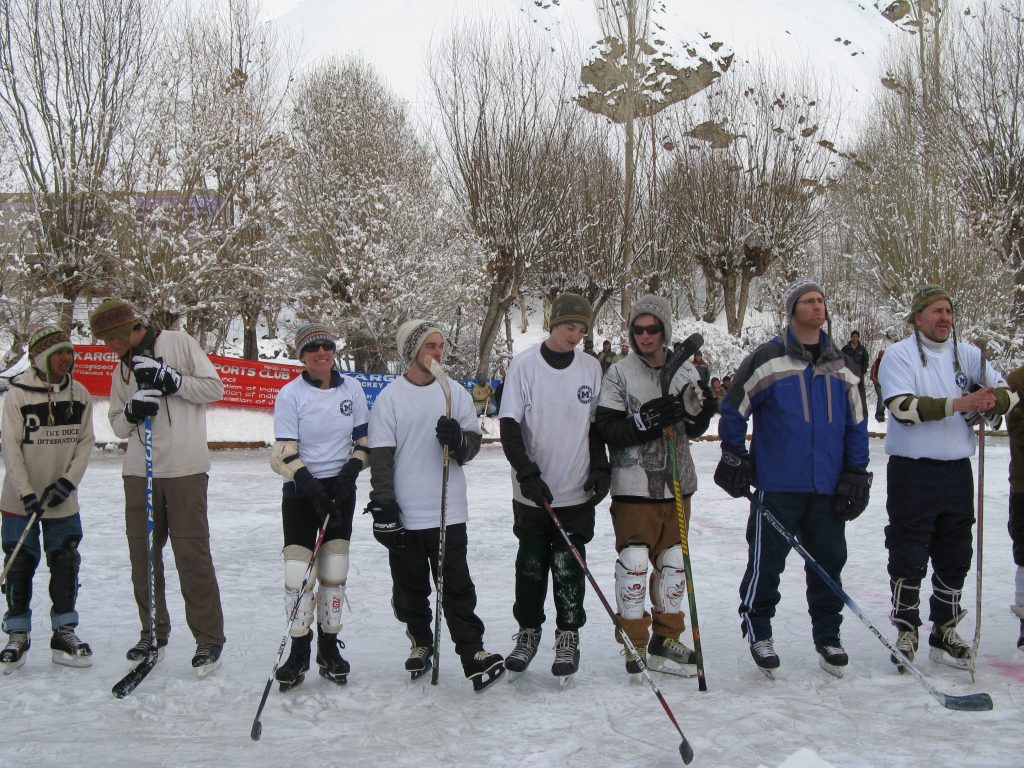
Join Our Ice Hockey and Cultural Exchange Program
We are excited to announce that we are now accepting participants or groups for our unique Ice Hockey and Cultural Exchange Program. This program is an incredible opportunity for individuals or teams who are interested in not only experiencing the thrill of ice hockey in one of the most breathtaking and remote locations on Earth, but also engaging in meaningful cultural exchanges with the local communities in Ladakh.
The program is fully supported by LIFE on the PLANET LADAKH, ensuring a seamless and enriching experience. From arranging local ice hockey tournaments to providing cultural immersion activities, our team will guide you every step of the way. Whether you are an athlete looking to compete or someone eager to connect with the rich cultural heritage of Ladakh, this is an opportunity that combines both sport and culture in a way that you won’t find anywhere else.
During your stay, you’ll have the chance to engage with local Ladakhi communities, learn about their traditions, and experience the warmth of their hospitality. Our program goes beyond just sports; it’s a way to connect, share stories, and build lasting relationships that transcend borders. You’ll also have the chance to witness the beauty of Ladakh’s landscapes, from its snow-covered mountains to its tranquil monasteries, offering a truly unforgettable experience.
If you are interested in participating or would like more information about this exciting opportunity, please do not hesitate to get in touch with us. We are looking forward to welcoming participants from all over the world who are eager to make a difference through sports and cultural exchange.

